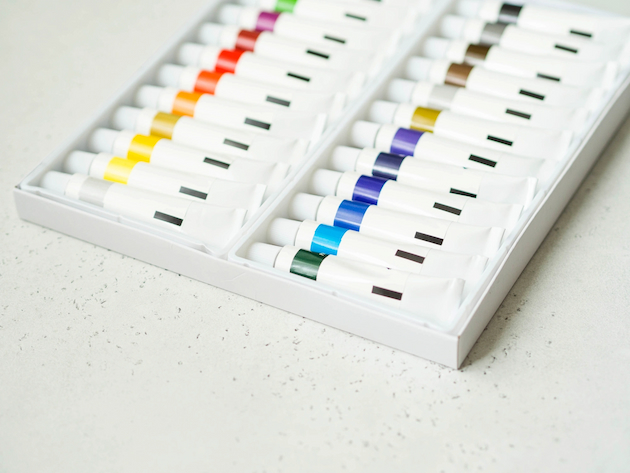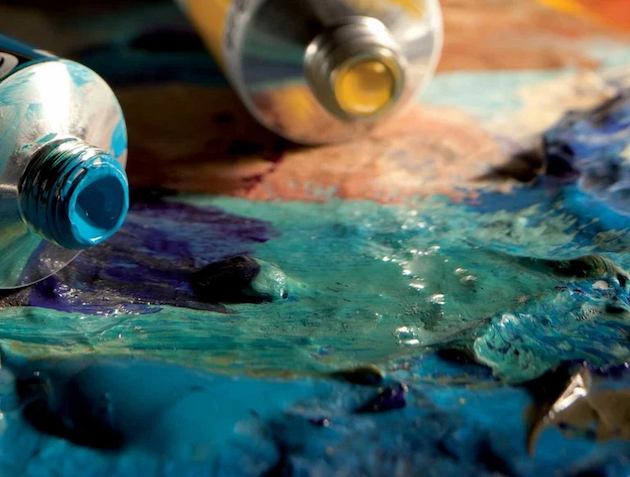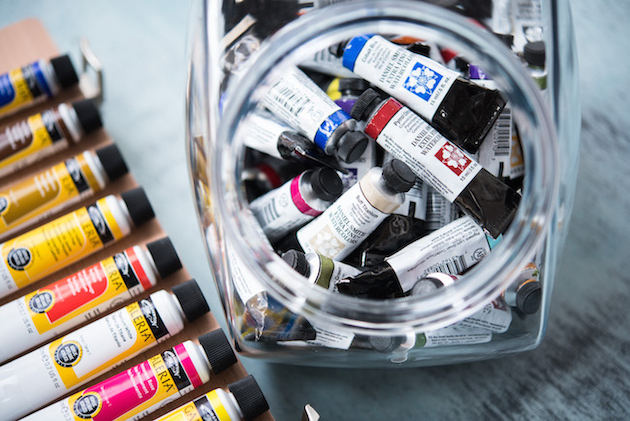A Guide to Acrylic Paints: Bring Your Paintings to Life
Before the 19th century, artists mixed their paints. This gave them the ability to choose the thickness and colour they wanted and to limit the use of fillers if any. However, things have changed since the 1960s and contemporary artists nowadays have acrylic paint at hand to bring their paintings to life with minimum effort!
Being one of the most popular art mediums, acrylic is water-based fast-drying paint that becomes water-resistant when dry. The final acrylic painting can resemble a watercolour, gouache, or oil paint depending on how much the paint is diluted with water or altered with acrylic gels, mediums, or pastes, or have distinctive qualities that cannot be achieved with other media.
What to Look for in Acrylic Paint
One of the main reasons why both professionals and beginners choose acrylics over any other type of paint is the fact that pigmented and easy-to-spread acrylic colour paints are one of the most versatile and least toxic mediums. Plus, they dry quickly which in turn gives artists the ability to work in multiple successive layers without muddying the colours.

But, to reap their benefits and get the maximum for your painting, there are some important factors to consider before purchasing the ideal set that will best serve your artistic aspirations.
Quality
When it comes to quality, acrylic paints can be distinguished between artists’ quality and students’ quality. Artists’ quality paints, sometimes known as “professional,” come in a variety of hues, include a lot of finely ground pigment and have excellent durability ratings.
Students’ colours, on the other hand, are affordable, but as a trade-off, they have a narrower selection, fewer pigments, and may contain fillers that could reduce the colour’s intensity.
In addition, the two differ in more ways than the manner they are manufactured; frequently, it is apparent that the colours used by artists are more vivid and have a smoother consistency, making them easier to blend and layer.
It’s okay to start with student-grade paint if you’re a novice and on a budget and invest in an artist set once you start creating work that you care about maintaining. Another wise option is to choose a medium ground, using student-grade paints for the earth tones, which are nearly as nice but spending more money for the pure, vivid hues.
Colour
Acrylics come in an absurdly large variety of hues. If you’re just starting, stick to the 10 fundamental hues. As required, you can combine them to produce different hues.
You’ll find that some hues are significantly more costly than others especially when purchasing paints of professional artist grade. This is due to the difficulty of obtaining some pigments. Some producers will categorize their paints into “series,” with “1” being the least expensive and “7” being the highest. The earth colours are often the least expensive, but cadmium-based hues can cost up to four times as much!

Some brands even substitute synthetic pigments for natural pigments to create beginner-friendly solutions, however, these products are likely to have a lower permanence rating and less colour intensity.
Today, “specialty colours” like fluorescent or iridescent paints, which include pigments that, when used alone or in combination with conventional paint, produce intriguing illuminating effects, are also available for purchase. If you choose to experiment, bear in mind that some of these colours aren’t irreversible.
Permanence
The term “permanence,” which is also referred to as “lightfastness,” describes a paint’s pigment’s capacity to fend off slow fading when exposed to light. Fugitive colours are a term used to describe pigments that fade over time. Acrylic colour paints typically have far greater durability ratings than oils or watercolours do!
When choosing paint, there are a few lightfastness parameters that you should consider. Artists’ colours are categorized by ASTM International based on a test that replicates 20 years of exposure to galleries.
According to ATSM standards, ATSM I stand for Excellent Lightfastness, ATSM II is Very Good Lightfastness, whereas ATSM III is Not Sufficiently Lightfastness. You can find these ATSM ratings on the jar or tub of acrylic you are about to purchase. Unless you’re practising or experimenting, use only paints with ATSM I or II rating.
Viscosity
The term “viscosity” describes the paint’s thickness or consistency. Similar to oil paints in substance, heavy-body acrylics hold brushstrokes and make it easier to blend and combine colours.
As an alternative, fluid acrylics are thinner, but still have the same pigment concentration and are more suited for dry-brushing, staining, detail work, and watercolour methods. There is also a variety of different acrylic mediums that you may mix with paint to achieve the precise consistency you desire if you’re seeking something in between.
Whichever variety you choose relies on your particular preferences and the style of your artwork. If you’re just starting, start with the more popular heavy-body acrylics because they can still be thinned with water or an acrylic medium if necessary.
Packing Options
Acrylics with a heavy body can be found in jars or tubes. Although jars allow you to buy more paint at once, tubes are more cost-effective and portable. Additionally, they frequently have slightly distinct textures- paint from jars is still thick when placed on the palette, and paint from tubes is paste-like.

If you’re unsure, start with the tubes and then get a few jars once you’ve identified specific brands and colours you frequently use. Start with the smaller 2 fl. oz. tubes when purchasing your first set because a little goes a long way, and you will want to keep your options open so you can still try out other brands.
Drying Time
What makes acrylics one of the top must-have supplies for beginner painters, is their quick drying. But this might be a hassle if the paint dries on the brush or palette before you’re finished with it. Fortunately, you have a few choices if you want to give your acrylics more time to dry!
Artists who prefer acrylics’ versatility and permanence over the slow drying time of oil paints can either purchase interactive/open acrylics, a relatively new type of acrylic paint that is manufactured to include a retardant that can slow drying time down to as long as a few weeks or use a retarding medium. People who like to recreate oil paints with acrylics can easily do so by using open ones.